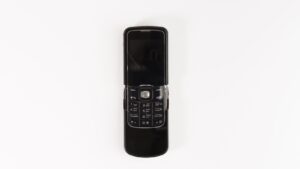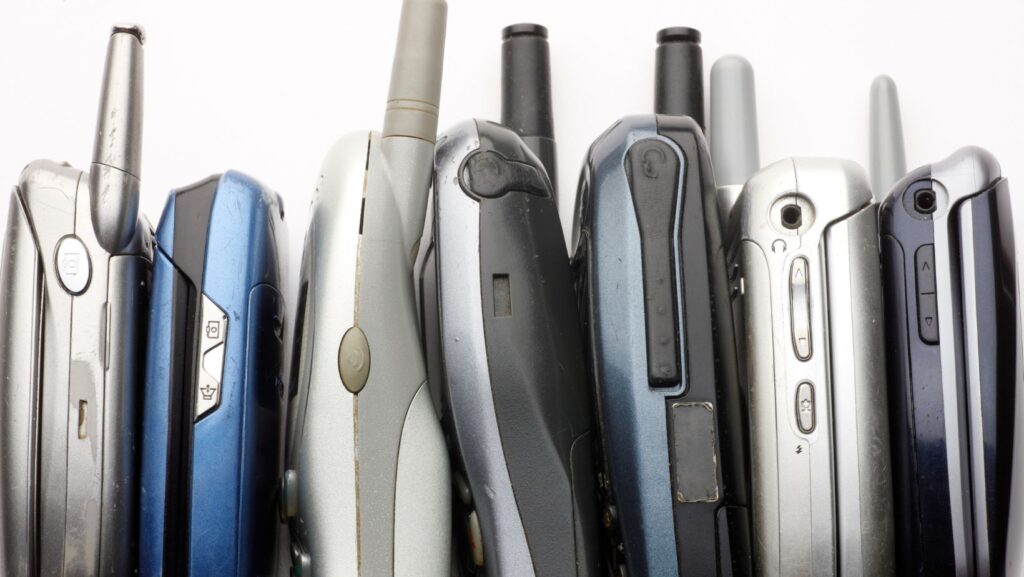Before smartphones became the pocket-sized computers we rely on today, the 2000s era was a golden age for mobile phones that were much simpler, yet undeniably iconic. This period introduced devices that not only redefined communication but also became a significant part of pop culture. From flip phones to the first generation of BlackBerrys, these gadgets hold a special place in the hearts of those who experienced the dawn of mobile technology.
Old School 2000s Phones
The Dawn of the Mobile Era in the 2000s
 The 2000s ushered in a transformative era for mobile phones, marking the beginning of what many consider the golden age of these devices. This period saw the transition from basic cell phones to more sophisticated models that offered a glimpse into the future of mobile communication. The iconic flip phones and BlackBerrys of the 2000s were not just tools for communication; they became fashion statements and integral parts of pop culture. Manufacturers like Nokia, Motorola, and BlackBerry led the market, introducing features that seemed revolutionary at the time, such as color displays, polyphonic ringtones, and the ability to send and receive emails. These old school 2000s phones combined functionality with style, making them highly desirable gadgets.
The 2000s ushered in a transformative era for mobile phones, marking the beginning of what many consider the golden age of these devices. This period saw the transition from basic cell phones to more sophisticated models that offered a glimpse into the future of mobile communication. The iconic flip phones and BlackBerrys of the 2000s were not just tools for communication; they became fashion statements and integral parts of pop culture. Manufacturers like Nokia, Motorola, and BlackBerry led the market, introducing features that seemed revolutionary at the time, such as color displays, polyphonic ringtones, and the ability to send and receive emails. These old school 2000s phones combined functionality with style, making them highly desirable gadgets.
Iconic Old School 2000s Phones That Defined the Decade
The early 2000s marked a pivotal period in mobile technology, giving rise to several devices that not only met the era’s demands for communication and style but also defined it. Among these, a few stood out for their innovative features, durability, and the way they captured the cultural zeitgeist. Below are some of the most iconic old school 2000s phones that left an indelible mark on the decade.
The Nokia 3310: Toughness and Snake II
The Nokia 3310, launched in the year 2000, epitomizes the blend of toughness and entertainment that characterized mobile phones of the decade. Renowned for its nearly indestructible build, the 3310 could withstand drops and knocks that would incapacitate today’s smartphones, making it a legend in phone durability. Beyond its robustness, the Nokia 3310 introduced users to the addictive game of Snake II, a simple yet compelling game that became synonymous with the Nokia brand. This phone not only offered essential features like long battery life and customizable ringtones but also established a benchmark for what mobile phones should withstand, all while keeping users entertained. It was more than just a phone; it was a cultural icon that resonated with millions around the globe, making it a quintessential specimen of old school 2000s phones.
The Motorola Razr V3: Sleekness and Style
 In 2004, the Motorola Razr V3 hit the market and redefined what a mobile phone could look like. Its ultra-thin profile and metallic finish represented a significant departure from the design of earlier mobile phones, making it an emblem of sleekness and style. The Razr V3 was not just about looks; it boasted features like a color screen, a built-in camera, and Bluetooth connectivity, setting the stage for future smartphones. Its clamshell design opened up to reveal a keypad that looked futuristic at the time, cementing the Razr V3’s place as a fashion statement. This phone captured the imagination of a status-conscious audience, becoming a must-have accessory and a symbol of sophistication. The Motorola Razr V3 was a remarkable achievement in design and technology, signaling a shift towards mobile devices that marry functionality with aesthetic appeal, a hallmark of the transformative era of old school 2000s phones.
In 2004, the Motorola Razr V3 hit the market and redefined what a mobile phone could look like. Its ultra-thin profile and metallic finish represented a significant departure from the design of earlier mobile phones, making it an emblem of sleekness and style. The Razr V3 was not just about looks; it boasted features like a color screen, a built-in camera, and Bluetooth connectivity, setting the stage for future smartphones. Its clamshell design opened up to reveal a keypad that looked futuristic at the time, cementing the Razr V3’s place as a fashion statement. This phone captured the imagination of a status-conscious audience, becoming a must-have accessory and a symbol of sophistication. The Motorola Razr V3 was a remarkable achievement in design and technology, signaling a shift towards mobile devices that marry functionality with aesthetic appeal, a hallmark of the transformative era of old school 2000s phones.
Features That Made 2000s Phones Stand Out
Old school 2000s phones distinguished themselves through a combination of innovative features, design, and functionality. These devices, including industry icons like the Nokia 3310 and Motorola Razr V3, introduced the world to mobile innovations that set the foundation for future smartphone development. Notably, their toughness, entertainment options such as pre-loaded games like Snake II, and groundbreaking aesthetics marked a significant evolution in mobile phone technology. The integration of color screens enhanced the user experience, making information and entertainment more engaging. Meanwhile, cameras on phones opened up new possibilities for instant photography, enabling users to capture and share moments on the go. Additionally, Bluetooth connectivity facilitated the wireless exchange of data between devices, simplifying communication and file sharing.

